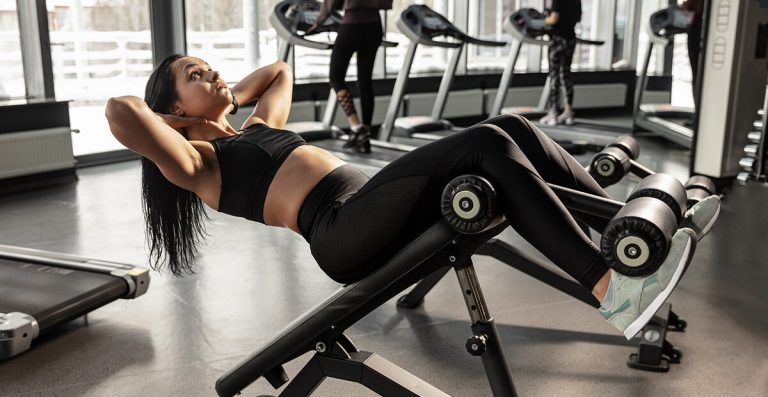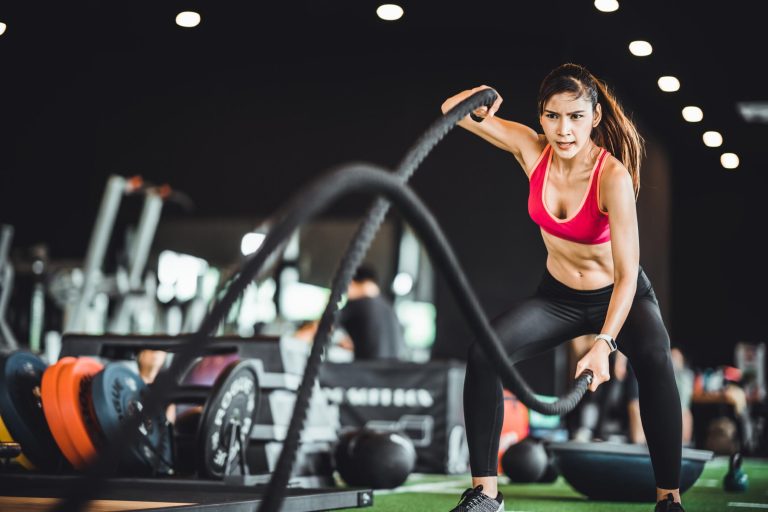The Ultimate Guide to Fitness: How to Start and Stay Committed
Fitness is an essential part of a healthy lifestyle, but it’s not always easy to get started or maintain momentum. Whether your goal is to lose weight, build muscle, enhance your cardiovascular health, or simply feel better in your body, embarking on a fitness journey can be one of the most rewarding decisions you make. Yet, with so many options and varying advice out there, it’s easy to feel overwhelmed.
In this expanded guide, we’ll break down the fundamental elements of fitness, offer tips on how to get started, and provide advice on how to stay motivated and committed. Whether you’re a beginner or looking to refine your current routine, this post will help you create a sustainable, results-driven fitness plan.
1. Understand the Fundamentals of Fitness
Before you dive into a fitness routine, it’s important to grasp the basic components of fitness. These pillars serve as the foundation for any effective workout regimen.
Cardiovascular Fitness
Cardio exercises elevate your heart rate, which improves the efficiency of your cardiovascular system (heart and lungs). Aerobic activities such as running, cycling, swimming, and walking improve endurance and overall energy levels. A strong cardiovascular system reduces the risk of heart disease, helps regulate blood pressure, and boosts mood through the release of endorphins.
Examples of cardio exercises include:
- Running or jogging
- Cycling (outdoor or stationary)
- Swimming or water aerobics
- Rowing
- Hiking
Strength Training
Strength training, also known as resistance training, helps build muscle, improve bone density, and increase metabolism. Strength training can take the form of free weights, resistance bands, bodyweight exercises (like push-ups and squats), or machines.
Benefits of strength training:
- Increased muscle mass and metabolism
- Improved posture and balance
- Enhanced athletic performance
- Reduction of body fat percentage
Common strength exercises include:
- Squats, lunges, and deadlifts (lower body)
- Bench press, push-ups, and rows (upper body)
- Core exercises like planks and leg raises
Flexibility and Mobility
Flexibility refers to the range of motion in your joints and muscles. Incorporating stretching and mobility exercises can enhance flexibility and prevent injuries. Tight muscles can limit mobility and lead to discomfort, so stretching helps improve posture and the overall quality of life.
Examples of flexibility exercises:
- Dynamic stretches (before workouts) like leg swings or arm circles
- Static stretches (after workouts) like hamstring stretches or quadriceps stretches
- Yoga and Pilates
Balance and Stability
Balance and stability exercises focus on improving your coordination, joint health, and functional movement patterns. This is especially important as we age, as maintaining good balance can prevent falls and injuries.
Common exercises for balance and stability:
- Single-leg stands or balance exercises
- Stability ball exercises
- Yoga poses like tree pose or warrior III
- Pilates movements that focus on the core and stability
2. Set Realistic, Achievable Goals
When it comes to fitness, goal-setting is crucial. Without clear goals, it’s easy to lose focus or become discouraged. Effective goals help you stay on track, measure progress, and adjust your approach when needed. Your goals should be specific, measurable, achievable, relevant, and time-bound (SMART). Here’s how you can set your goals:
- Specific: Clearly define what you want to achieve. Example: “I want to be able to complete a 5K race in under 30 minutes.”
- Measurable: Make sure you can track your progress. Example: “I will track my time during weekly runs to monitor improvement.”
- Achievable: Be realistic about what you can accomplish within your time frame. Example: “I can gradually increase my running distance each week.”
- Relevant: Align your goal with your overall fitness vision. Example: “I want to improve my cardiovascular health for long-term wellness.”
- Time-bound: Set a clear timeline for achieving your goal. Example: “I will complete my first 5K in three months.”
By breaking down large goals into smaller milestones, you can stay motivated and feel accomplished as you progress.
3. Find a Fitness Routine You Enjoy
The best workout routine is one that you enjoy. If you’re not excited about your workout, it will be hard to stay motivated. Explore different types of exercise to find what excites you. Here are some options to get you started:
Group Fitness Classes
Joining group fitness classes is a great way to stay motivated, as the communal environment can push you to work harder and stick with the program. These classes often provide a structure that removes the guesswork from your workouts.
Popular group fitness classes include:
- Yoga: Increases flexibility, strengthens muscles, and reduces stress.
- Pilates: Focuses on core strength, flexibility, and body awareness.
- Spin: A high-intensity cycling class that improves cardiovascular health.
- CrossFit: A mix of strength training and cardio exercises, designed to push you to your limits.
- Zumba: A fun, dance-based cardio workout that incorporates Latin and international music.
Home Workouts
Not everyone has the time or resources to hit the gym every day. Thankfully, home workouts can be just as effective. You don’t need fancy equipment—bodyweight exercises are a great starting point, and resistance bands, dumbbells, or kettlebells can take your workouts to the next level.
Example bodyweight exercises include:
- Push-ups
- Squats
- Lunges
- Planks
- Burpees
There are also plenty of fitness apps and YouTube channels that offer guided workouts, so you can exercise whenever it’s convenient.
Outdoor Activities
Sometimes the best way to stay fit is to enjoy the great outdoors. Outdoor activities like hiking, cycling, or even brisk walking can provide a fun way to get your body moving and relieve stress. Plus, the fresh air and connection with nature can boost your mental well-being.
4. Embrace Consistency Over Perfection
Fitness is a marathon, not a sprint. It’s easy to get caught up in the idea that you need to be perfect, but that mentality can often lead to burnout or frustration. Focus on building consistency, as small daily efforts add up over time.
Consistency looks like:
- Scheduling your workouts at the same time each week to make it a habit.
- Creating a routine that you can stick to, even when life gets busy.
- Allowing yourself flexibility when needed—if you miss a workout or indulge in unhealthy food, just get back on track the next day.
Remember, the goal is progress, not perfection. Celebrate every step forward, whether it’s adding more weight to your lifts, running an extra mile, or mastering a new yoga pose.
5. Listen to Your Body
One of the most important aspects of any fitness journey is listening to your body. While pushing yourself can lead to progress, overtraining can lead to injury and setbacks.
Rest and Recovery
Rest is an essential component of any fitness plan. Your muscles need time to recover and rebuild after a workout, so ensure you’re taking rest days when needed. Rest doesn’t mean complete inactivity—active recovery, such as light walking, yoga, or stretching, can help maintain blood flow to the muscles and speed up recovery.
Signs of Overtraining
- Constant fatigue or lack of energy
- Persistent soreness or joint pain
- Insomnia or disturbed sleep
- Decreased performance in workouts
- Lack of motivation
If you’re experiencing these signs, it may be time to dial back your intensity and focus on recovery.
6. Fuel Your Body with Proper Nutrition
Exercise is only one piece of the fitness puzzle; proper nutrition is equally important for achieving optimal results. The food you eat plays a direct role in your performance, recovery, and overall well-being.
- Protein: Essential for muscle repair and growth. Sources include chicken, fish, eggs, tofu, beans, and lentils.
- Carbohydrates: The body’s main energy source, which is especially important for athletes or those doing intense exercise. Opt for complex carbs like whole grains, oats, quinoa, and sweet potatoes.
- Healthy Fats: Support joint health, hormone function, and brain function. Include sources like avocado, nuts, seeds, olive oil, and fatty fish.
- Hydration: Stay hydrated throughout the day to optimize performance, aid digestion, and support recovery. Drink water before, during, and after your workouts.
A balanced diet rich in nutrients will help fuel your body to perform at its best.
7. Track Your Progress and Stay Motivated
Tracking your progress helps you see how far you’ve come and reminds you of your capabilities. Here are some ways to track and stay motivated:
- Fitness Apps: Use fitness apps to log your workouts, track calories, and measure your progress.
- Journals: Keep a fitness journal where you note your workout details, energy levels, and improvements.
- Progress Photos: Sometimes the results aren’t immediately visible on the scale, but progress photos can help you track changes in your body composition.
Celebrate your victories, no matter how small, and remember that consistency is key.
8. Don’t Compare Yourself to Others
It’s easy to fall into the trap of comparing your progress with others, especially with the rise of fitness influencers on social media. Everyone is on their unique journey with different starting points, abilities, and circumstances.
Focus on your own progress and growth, and recognize that your fitness journey is personal. Celebrate the steps you’ve taken toward a healthier lifestyle and embrace the process.
Conclusion
Fitness is not just about getting in shape—it’s about creating a lifestyle that supports your long-term well-being. Whether you’re a beginner or a seasoned athlete, understanding the key principles of fitness, setting realistic goals, and remaining consistent will help you stay on track.
Remember: It’s a journey, not a destination. Stay patient, listen to your body, and enjoy the process. Your commitment to fitness will pay off in improved physical health, mental well-being, and overall vitality.


